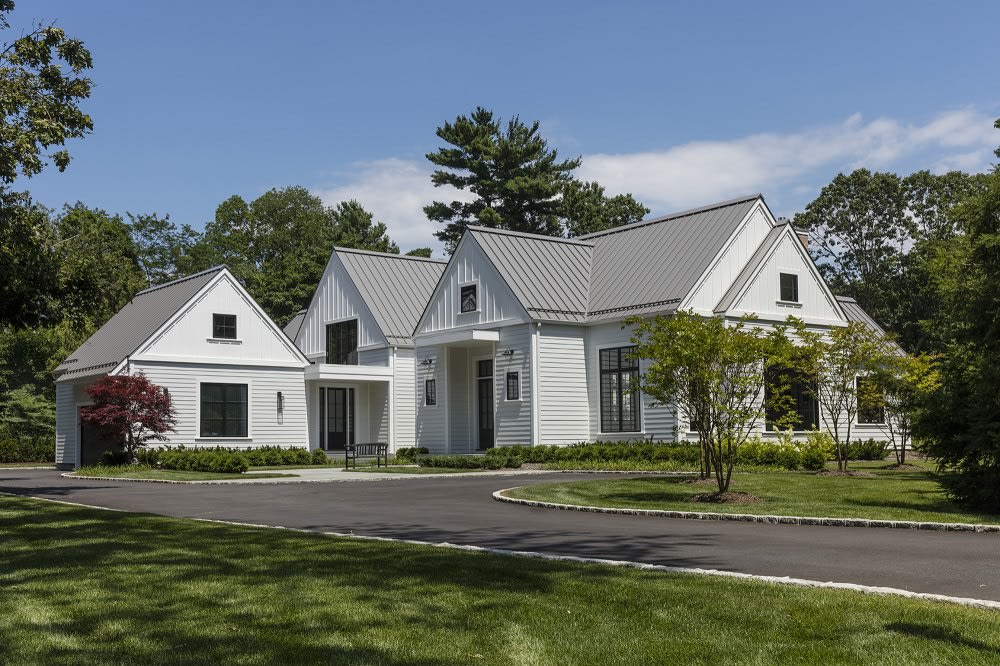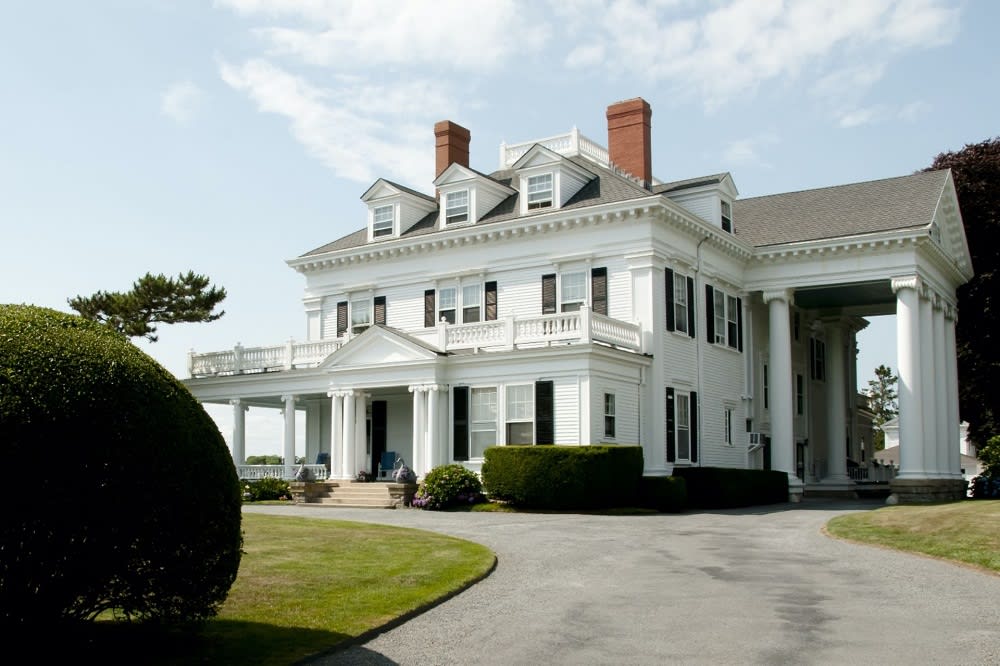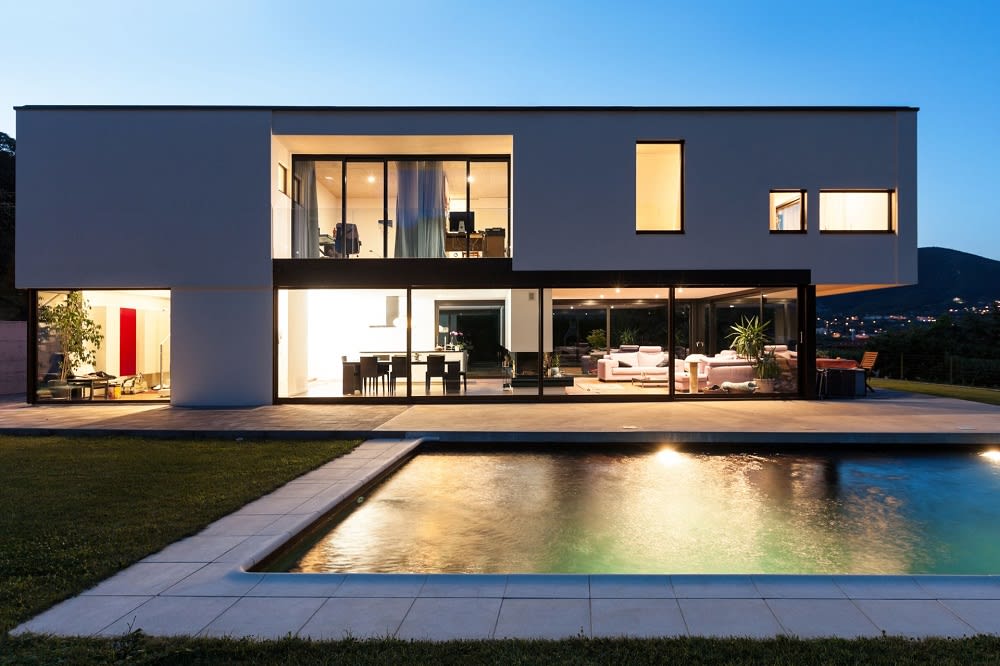Architecture can tell us a lot about a country and its people. Changes in society, trends, and cultures are embedded in the architectural features of an area. As the only site to be preserved by the National Park Service because of its architectural merit, the Hamptons exemplify diverse structures and landscapes like few other places in the U.S. Like several parts of the country, the East End of Long Island is rich in history. But unlike these other areas, the Hamptons have perfectly preserved the architecture of America’s past. As new trends and designs in architecture began to take hold, the prior ones have been maintained so well that their stories remain apparent to any keen observer. Today, the buildings at the Hamptons are a fusion of American design concepts and classic European architectural styles, making many of them unique and distinctive.
Here are four of the most popular architectural styles in the Hamptons.
1. Farmhouse architectural style

The Hamptons were founded in the 1640s by farmers who crossed over from England; farmhouses were the first architectural style in the area. But "farmhouse" doesn't exclusively refer to style; it also relates to function. These structures were built on agricultural lands to house the individuals who worked on the farm. That is why farmhouses have several different styles.
The farmers themselves built the original style farmhouses instead of relying on architects. But as materials became accessible through the railroad, people started adapting to the popular style at the time. Landowners would look at a pattern book to choose which style they wanted and then buy the materials to build it. The result was architecture featuring saltbox-style lean-to homes built with pine paneling, oak framing, and cedar shingles with post and beam barns.
Although farmhouses may not sound appealing, they can be quite beautiful. Modern farmhouses have been upgraded for modern times, and some are even converted from barns. You might describe their contemporary style as rustic with chic interiors. They have long, wide, rectangular designs and high-pitched roofs, allowing their owners to plan and design the interior as they see fit. They also have oversized windows and entryways.
Farmhouses are built with natural materials, usually locally sourced, including stone for fireplaces and foundations.
Notable farmhouses in the Hamptons include:
-
The preserved historical site, Home Sweet Home, built in the early 1700s.
-
849 Hayground Road, a Bridgehampton farmhouse that sits on 2.5 acres. It was built in the 17th century and has five bedrooms and several modern amenities.
-
52 Meadow Court, Bridgehampton, a beautifully renovated traditional farmhouse and exemplary piece of Bridgehampton real estate.
Common Questions about Farmhouse Style Homes
-
Can Farmhouse style work on smaller lots?
Yes, smaller "cottage" versions focus on using vertical space and multi-functional rooms. -
How to avoid a “rustic overload” look?
Balance rustic materials with sleek finishes like polished concrete floors and stainless steel appliances.
Key Takeaways
-
Modern interpretations use reclaimed barn wood and soapstone countertops.
-
Sustainable features may include solar panels and rainwater collection systems.
-
Oversized sliding doors often connect indoor spaces to outdoor patios.
2. Shingle architectural style
After the railroad arrived in the Hamptons in the 1870s, so did the summer colony and wealthy scions of industry. With the money and accessibility to various materials, residents could hire architects to design grand summer cottages.
They left behind the highly ornamental Victorian-style houses for shingle-style homes that were more expensive to design and build. Shingle-style houses originated in Newport's wealthier coastal areas, Long Island's East End, and Rhode Island. Today, they are popular with homeowners looking for a cozy seaside home.
The modern shingle-style house features a shingled surface, asymmetrical exteriors, a large grouping of windows, spacious porches, asymmetrical facades, and many steeply sloped, complex rooflines. Overall this style carries an atmosphere of informality and relaxation.
Architects notable for designing shingle-style homes include:
-
Stanford White, a partner in the architectural firm McKim, Mead & White
-
Francis Fleetwood, who designed more than 200 mansions in the Hamptons
Notable buildings featuring the shingle architectural style:
-
A mansion designed for commodities trader David Campbell in 2001, sold for $45 million in 2004.
-
Montauk Association Historic District houses by McKim, Mead & White in 1883.
-
The Seven Sisters on the East End, Montauk cottages built in the 1880s.
Common Questions about Shingle Style Homes
-
Why are shingle exteriors popular in coastal areas?
Shingle exteriors, especially cedar, weather to a silvery-gray that blends well with beach surroundings. They are also resistant to salt air. -
Are Shingle-style homes high-maintenance?
Traditional cedar shingles need care, but modern treatments like fire-resistant coatings reduce maintenance.
Key Takeaways
-
Shingle style emerged in the 1880s in New England as a reaction to ornate Victorian styles.
-
Modern versions may include energy-efficient glass and reclaimed wood.
-
Many are part of historic districts, needing approval for exterior changes.
3. Colonial Revival architectural style

Colonial revival architecture is one of the most popular architectural styles in the Hamptons and around the country. Its popularity is due to its elegance and ability to represent a variety of forms.
The 1876 Centennial Exhibition reignited Americans' fascination with houses built by early settlers. This interest peaked in the 1950s. This iconic home style is still constructed throughout the country.
Colonial Revival homes are a fusion of previous colonial styles, influenced by the more ornate Victorian-era homes that came before them. This style allowed architects and home builders to revisit earlier generations’ architecture with updated trends.
Common features include side-gabled roofs, gambrel roofs with dormers, and hipped roofs. Most are about two or two-and-a-half stories tall, with grand front doors featuring sidelights, broken pediments, and modest porticos with columns.
Iconic Colonial Revival Hamptons properties:
-
The Colonial Revival home to the south designed by Sawyer Berson.
-
The Sag Harbor Whaling & Historical Museum.
-
The President's House at the College of William & Mary in Williamsburg.
Common Questions about Colonial Revival homes
-
How do Colonial Revival homes handle modern amenities?
Many integrate updated kitchens and HVAC systems while preserving moldings and hardware. -
Are additions allowed?
Yes, but it’s best to add to the rear or side to preserve symmetry.
Key Takeaways
-
Emerged from a renewed interest in Georgian and Federal aesthetics.
-
Features central staircases, formal dining rooms, and wood-paneled libraries.
-
Boxwood hedges and brick walkways complement the exterior.
4. Modern and contemporary architectural style

Modern homes in the Hamptons feature multiple styles, using construction materials like concrete and steel alongside traditional elements. They allow a high degree of flexibility.
Modern and contemporary homes use expansive windows for natural light, often feature asymmetrical designs, sharp angles, and clean roof lines. They typically include swimming pools, manicured yards, and outdoor living areas.
Notable examples:
-
The Gates of the Grove Synagogue by Norman Jaffe.
-
Charles Gwathmey’s house for his parents in Amagansett.
-
BatesMasi+Architects’ office building in East Hampton.
-
Frank Greenwald’s modern two-story Sag Harbor home.
-
A sleek, curved house on Flying Point Road in Water Mill.
Common Questions about Modern Contemporary Homes
-
How do Contemporary homes handle privacy?
Through frosted glass, strategic landscaping, and courtyards. -
Are they more expensive to build?
Yes, custom engineering and premium materials often raise costs.
Key Takeaways
-
Innovative features include glass curtain walls and corten steel.
-
Energy-efficient options like geothermal heating and green roofs are common.
-
Unique designs may affect resale value.
Frequently Asked Questions about Hamptons House Styles
What defines the Hamptons house style?
Relaxed coastal elegance — shingle exteriors, wrap-around porches, large windows, steep roofs, and light, airy interiors.
Do Hamptons homes have a specific color palette?
Yes, soft neutral colors inspired by the beach and dunes, with natural materials like timber and stone.
Are these homes good for entertaining?
Absolutely — they blend luxury with casual comfort, perfect for family gatherings and guests.
Additional Insights
-
Shingle and Colonial Revival styles are rooted in classic American architecture but updated for modern living.
-
Farmhouse and Contemporary styles are prized for their sustainable, innovative designs.
-
The right style depends on personal taste and the specific Hamptons location.

